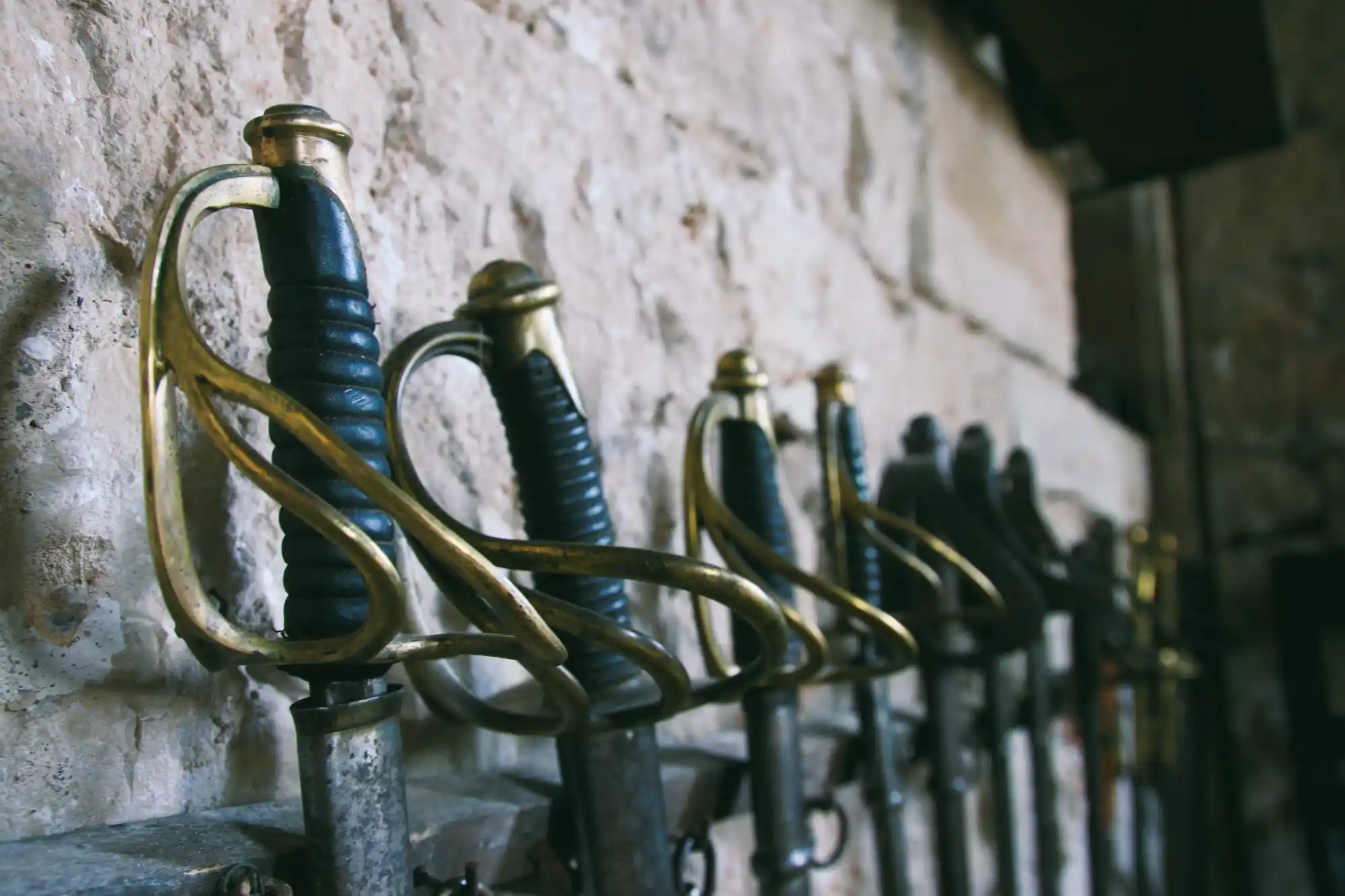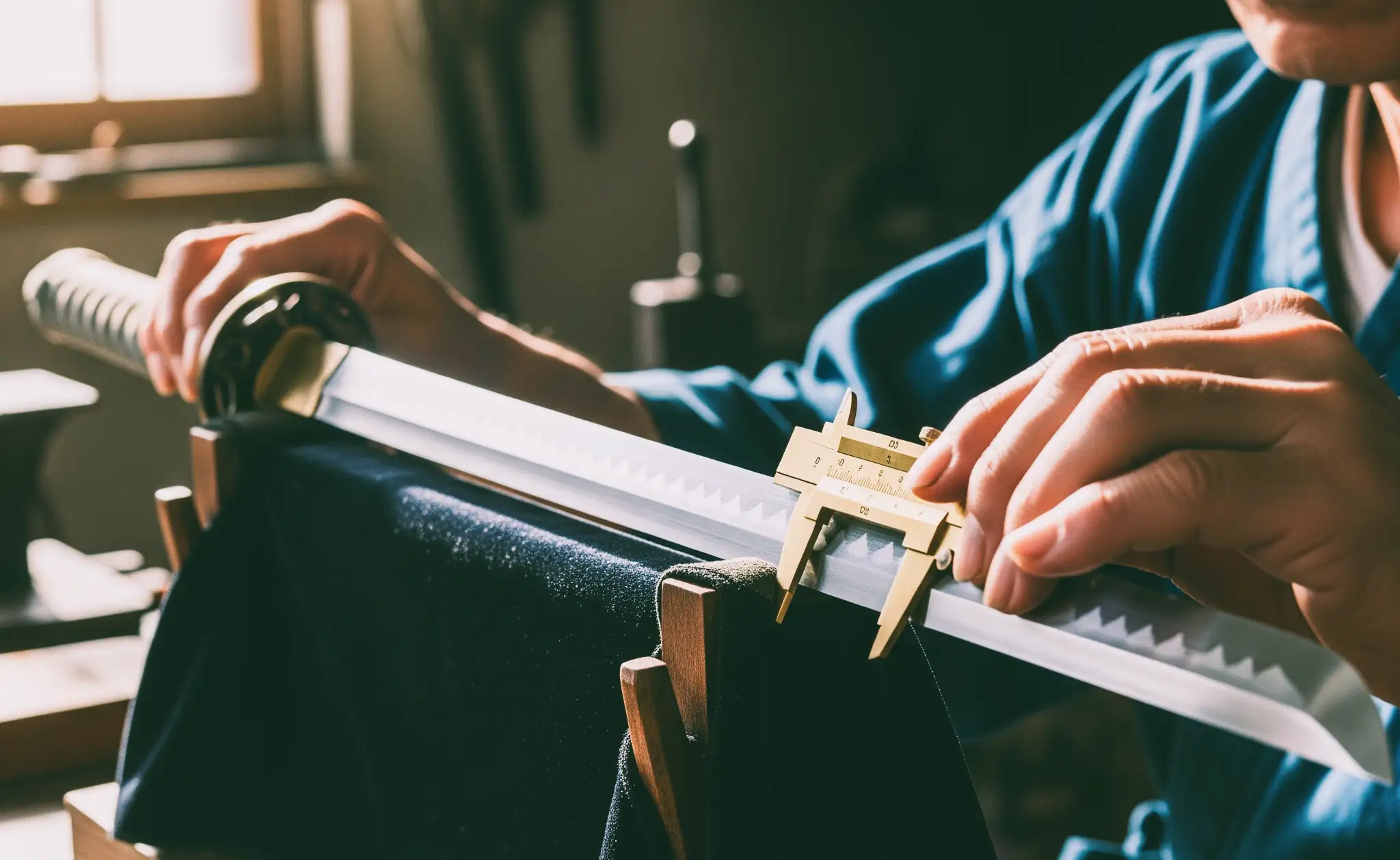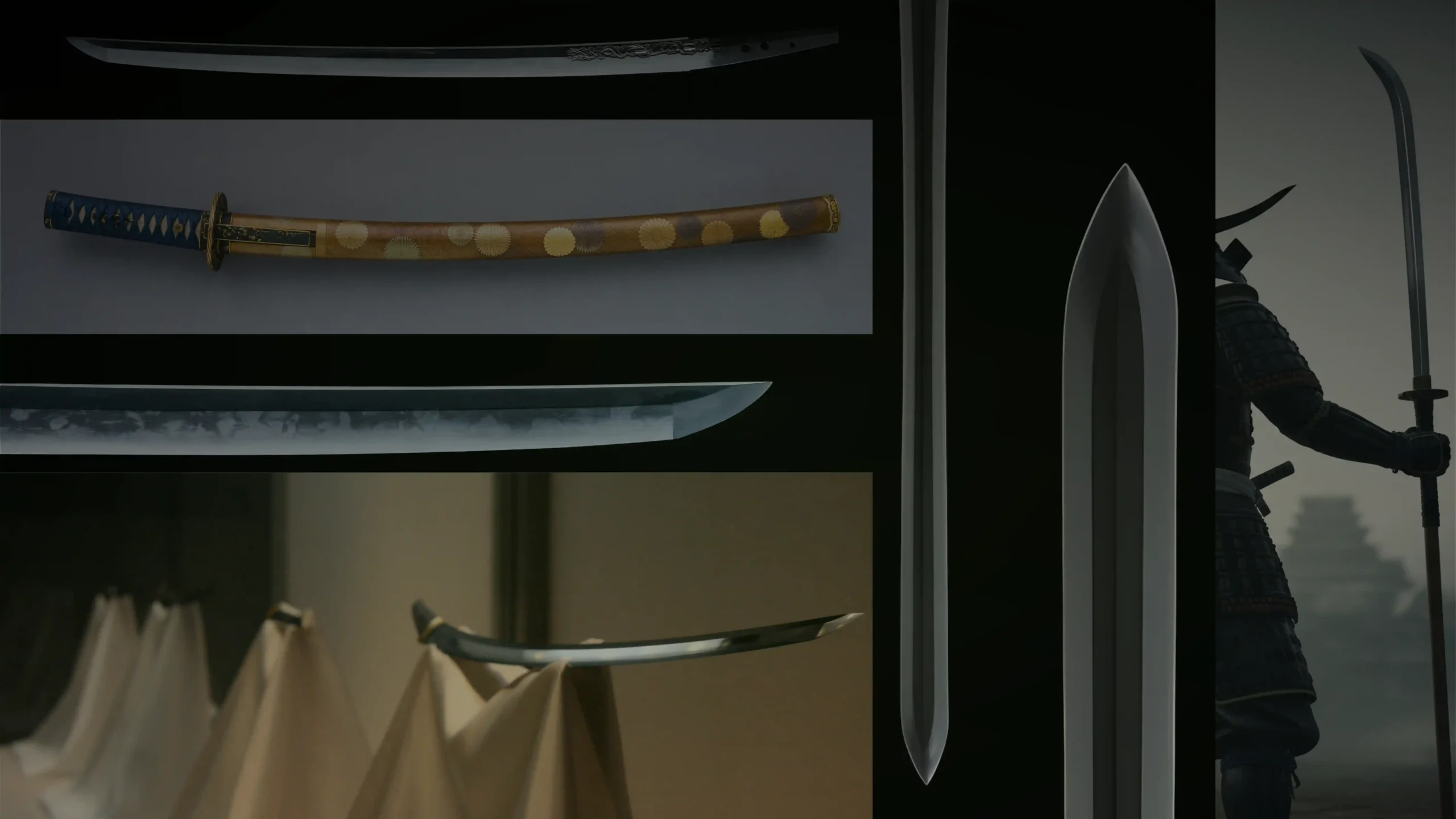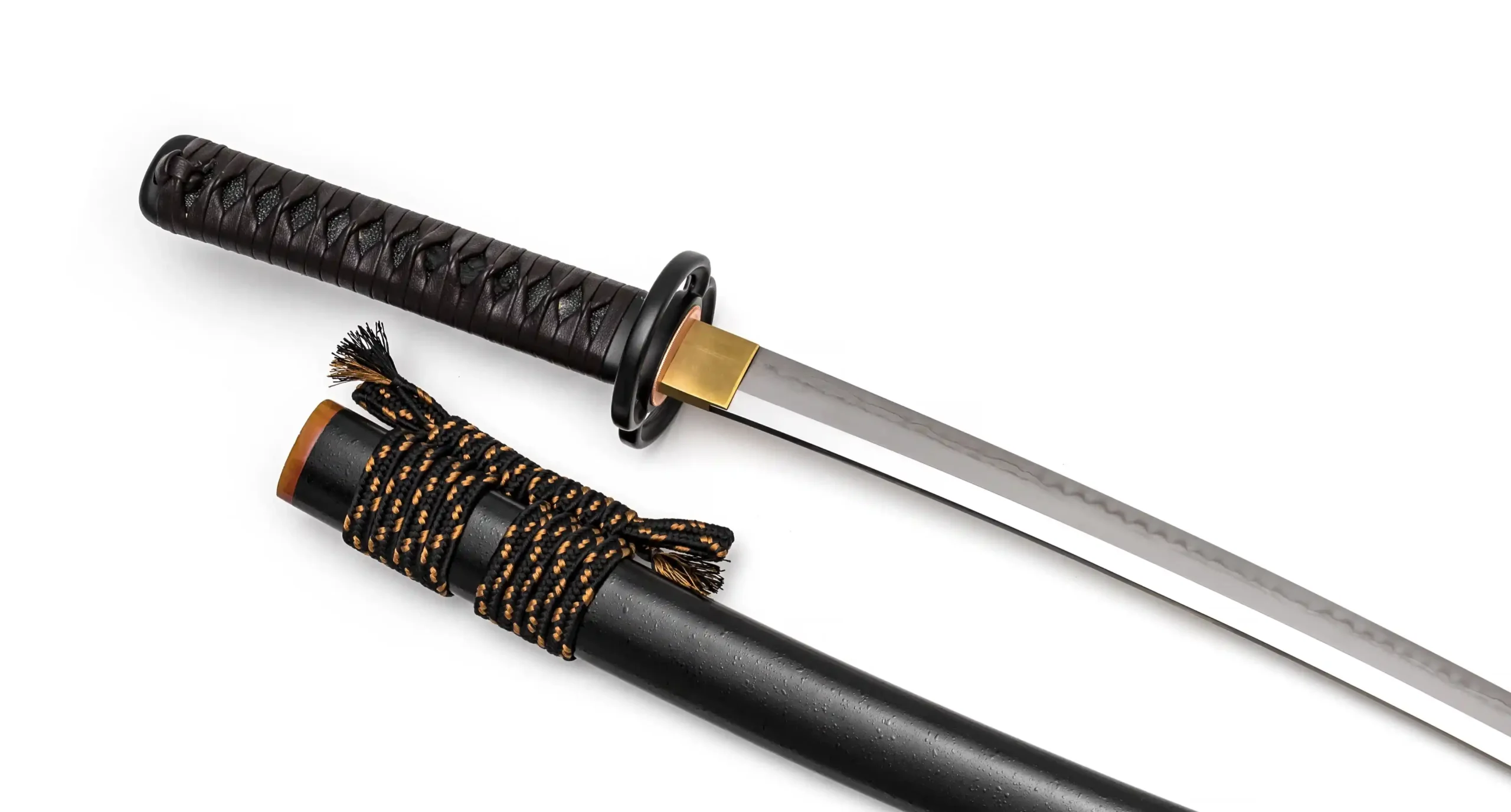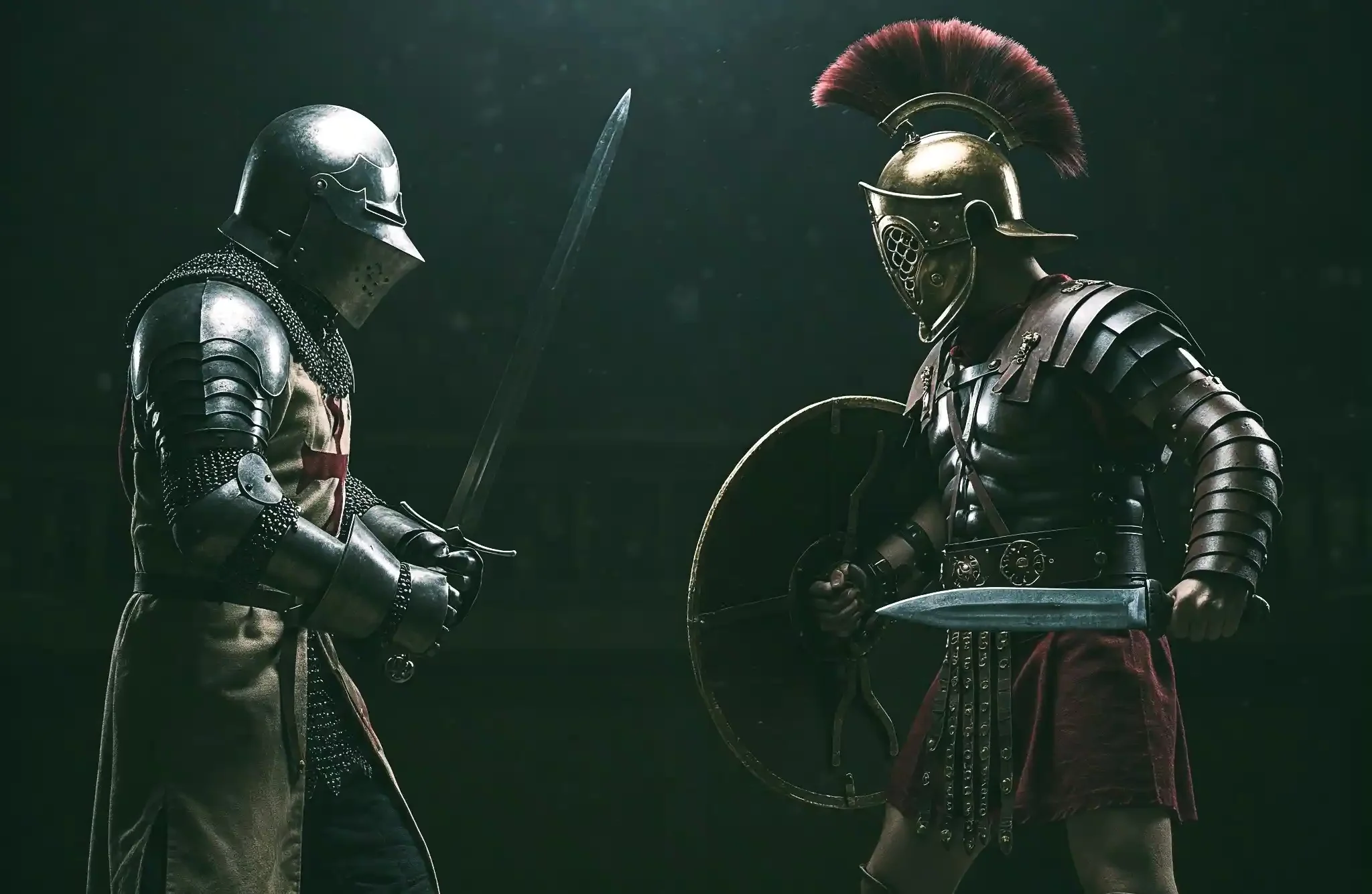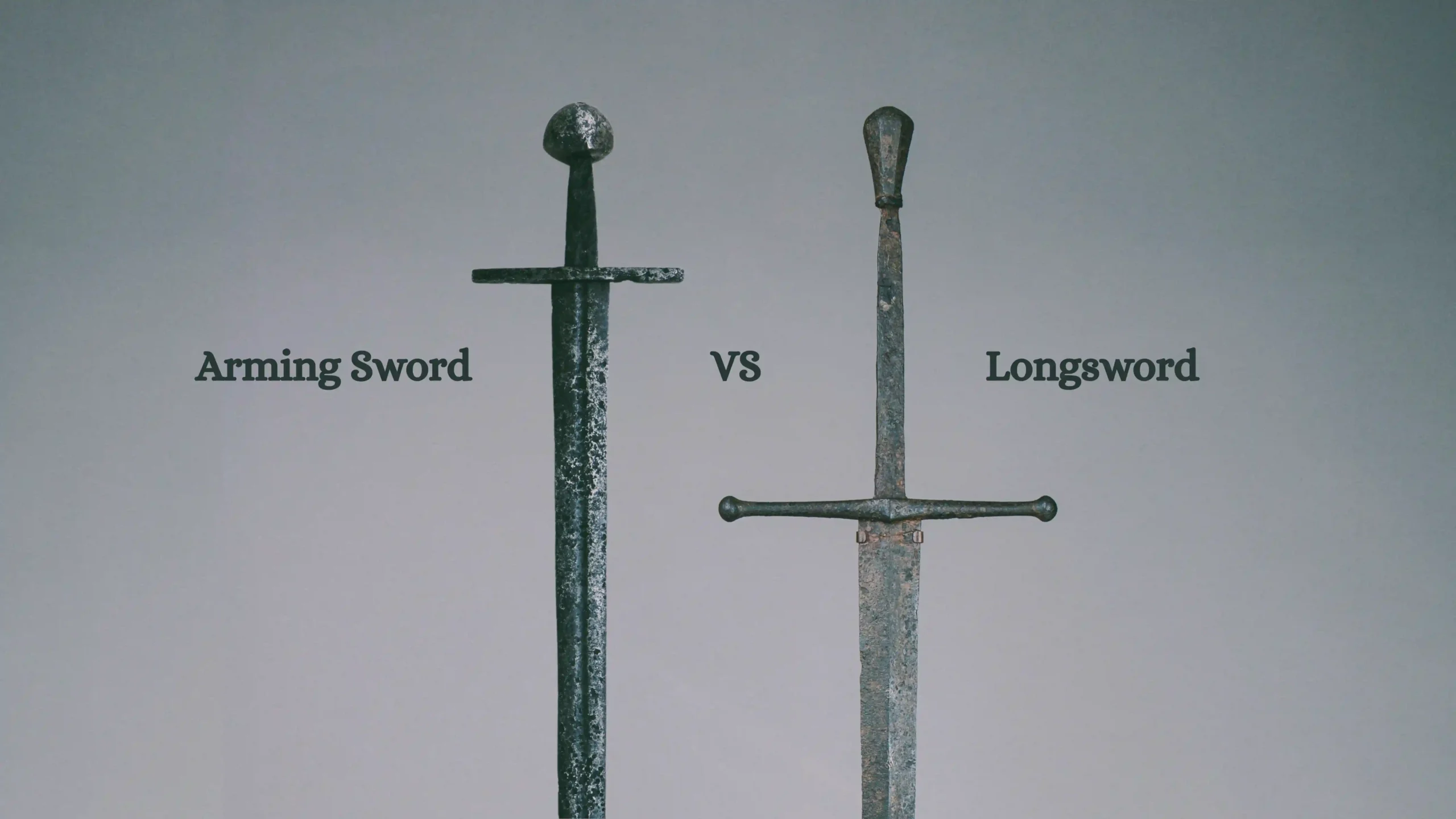We may earn revenue from the products available on this page and participate in affiliate programs. Learn more >
When it comes to self-defense, most people think of modern tools. They forget that swords have been reliable for centuries, and even today, they can offer unique advantages. Although using a sword for protection comes with some challenges, in the end, it’s better than nothing. In different periods, different types have been more effective. In modern days, some are just better.
If you are thinking of getting a functional sword purely for protection, the truth is you’ll probably end up using it for other purposes. Maybe practicing, cutting exercises and displaying it on your wall. Buying your favorite blade will make more sense, and you can use that in case.
With that in mind, I ranked the most collectibles, from least to the best sword for self defense in modern times, based on practicality, control, reach, and advantages and disadvantages they offer.
Can You Use a Sword for Self Defense?
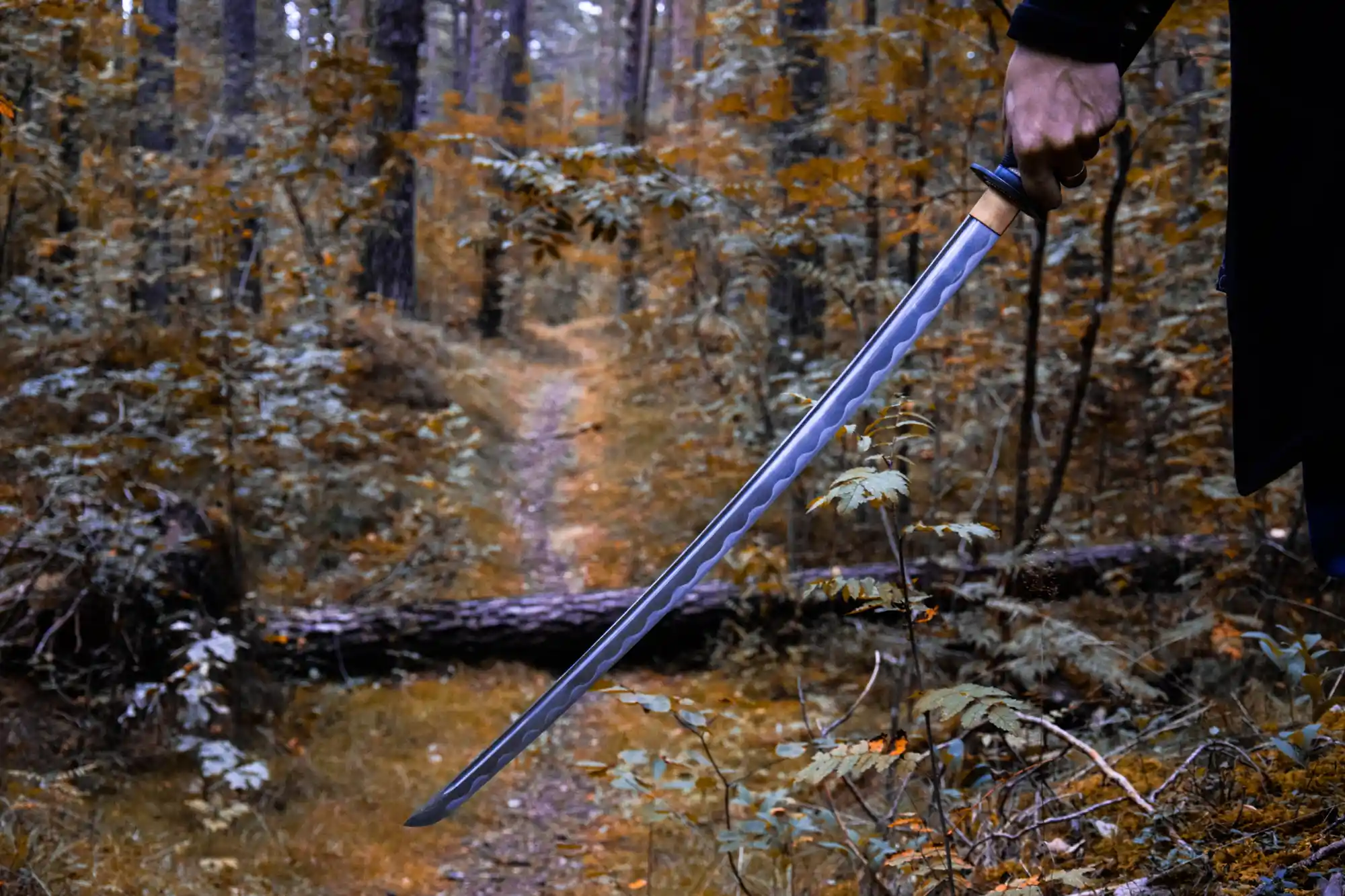
Simple answer, Yes. You can use a sword for self-defense, but there are some crucial things you should be aware of. Swords are deadly weapons, and using one—even in self-defense—can lead to criminal charges if it results in serious injury or death. The goal isn’t to kill but to possibly disable, intimidate, or keep distance from an aggressor. If you’re thinking of keeping one in your car, it’s not a good idea either, because it can put you in legal trouble.
Since in most countries real blades aren’t allowed to be carried in public places (even not practical), using a sword specifically for home defense can be a great idea. If you appreciate a fine blade with history behind it, buying one will serve multiple purposes.
If you live in remote areas, it could also come in handy against wild animals like wild boars, bears etc.. or even certain survival tasks that require a sturdy blade.
Best Swords for Self Defense
16. Bastard Sword
Advantages
- Intimidating presence
- Longer blade keeps threats at a safe distance
- Can be wielded with one or two hands
- More effective against bigger animals
Disadvantages
- Not ideal for beginners or those untrained
- Hard to maneuver indoors or in narrow areas
- Heavier than other swords
- Less practical in fast, close-range encounters
- It can cause a lot of damage even if you don’t want to
I would say that the bastard sword (or longswords) is one of the best swords compared to others on this list. This includes self-defense, one-on-one combat, and open battles. But this was back in the late medieval times, when you faced opponents in full armor or engaged in the rugged, survival-oriented lifestyle of the era.
In modern times, however, everything has changed. This sword is heavier and longer than most options. Although it’s supposed to be used with one or two hands, you should know that most bastard sword replicas are nearly impossible to use effectively with just one hand.

This makes it more suitable for someone experienced in wielding larger blades and who knows the right techniques and movements. It can be really challenging to use in tight spaces, especially for beginners. It’s slow when you need to be quick and hard to control when you need to be precise.
A bastard sword can be a good option for defense if other practical tools aren’t available or if you live in remote areas with more open space or face threats from wild animals.
15. Kilij
Advantages
- Intimidating presence
- Effective for both cut and thrust
- It helps you to maintain distance
Disadvantages
- Requires skill to use effectively
- Hard to maneuver in tight spaces
- Single edged
- Takes time to recover in case of a wrong movement
- Awkward in confined spaces
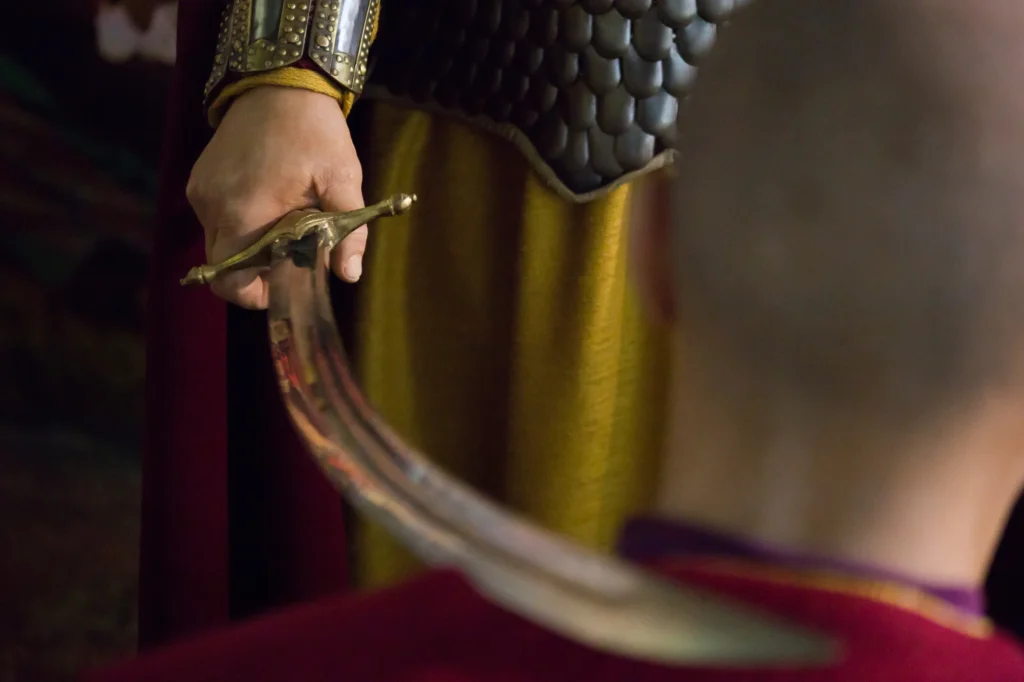
The kilij is a Turkish saber with a long, single-edged, deeply curved blade. It is a favorite among enthusiasts and collectors, whether for display or personal collections. It’s ideal for powerful slashes and quick thrusts. A sword like this requires some skill to use effectively. If you want to use a kilij for self-defense, that’s ok, however, I suggest considering other similar types, such as a cutlass or European cavalry sabres, which are shorter, weigh less, and are easier to use.
14. Hook Sword
Advantages
- Lightweight
- Dual
- Good reach
- Easy to use
Disadvantages
- More prone to breaking
- Risk of self-injury
- The hooked tip may stuck
- Harder to cut with
- Less shock absorption
The hook sword is a unique weapon wielded by Shaolin monks in ancient China, traditionally used in pairs. It features a long, straight blade with a hooked tip designed to trap or catch an opponent’s weapon or limbs. The handguard often includes a crescent shape and can be used to slash or block blows, while the hook tip allows for locking, pulling, or disarming an adversary. The pommel can also be used for blunt strikes.
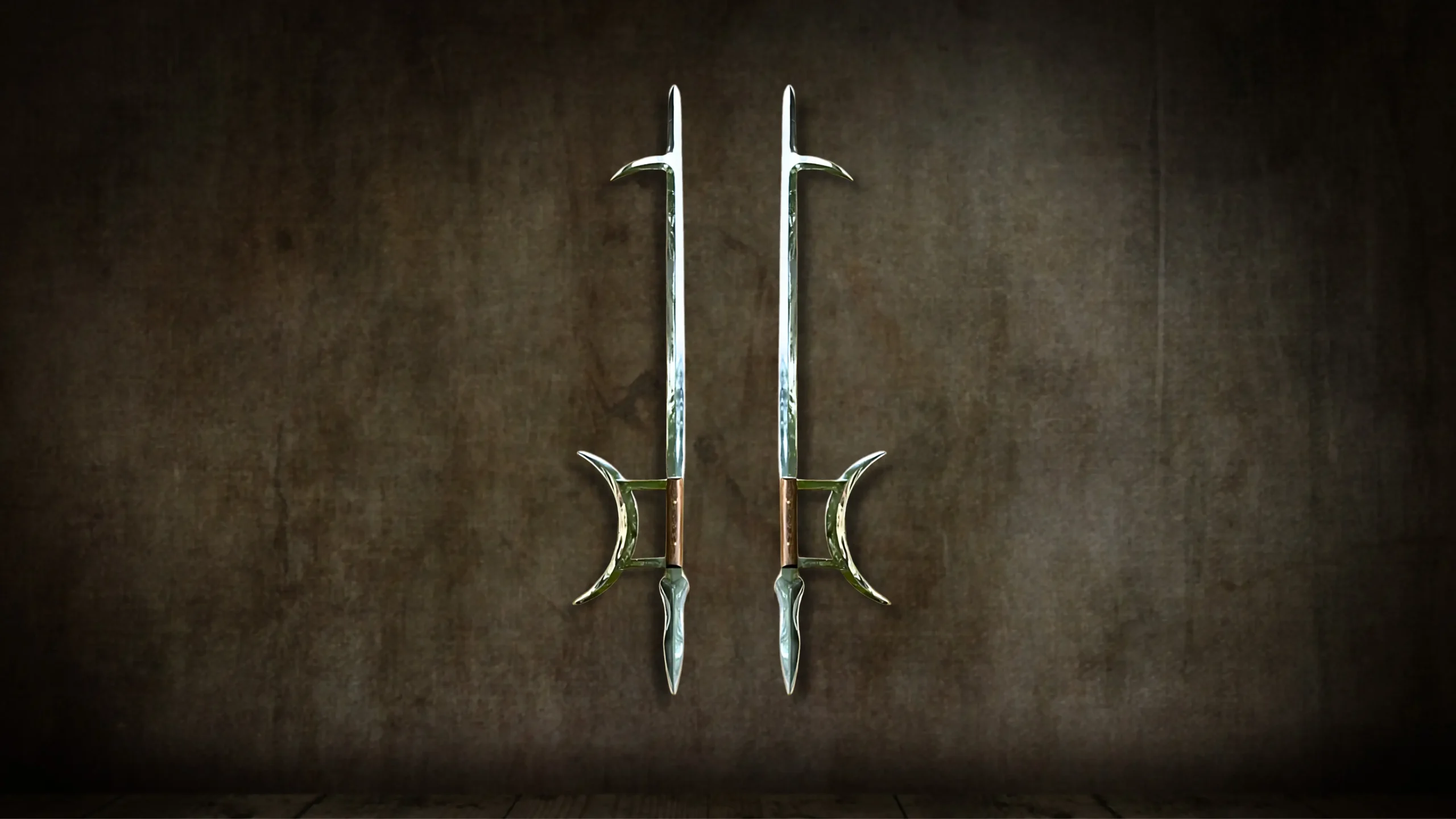
Something to keep in mind is that even if you know the basics of sword handling, using a hook sword feels quite different. While they’re not particularly hard to control or maneuver, they aren’t the most comfortable swords to wield. You have to be careful when hitting something, as it’s easy for your grip to shift, making it hard to keep your hand in the right position.
The extended guard on the handle can also make contact with your forearm if your hand rotates or shifts position too much, which can lead to injury. Using them in pairs is better than using just one.
13. Templar
Advantages
- Works well in close range situations
- Light yet long blade, offering good reach without excess weight
- Can be wielded with one or two hands
- Faster to draw
- Double edged
Disadvantages
- Not ideal for tight spaces
- Hard to use effectively with one hand
The Templar is a one-handed, straight, double-edged sword historically associated with the Knights Templar. Compared to the kilij for self-defense, it offers certain advantages. The first advantage is that it’s slightly lighter. Its weight and straight design make it easier to control. It can be used for both cuts and thrusts with more ease.

Because it is a one-handed weapon, you can use your other hand for a second item like a shield, buckler, or even a phone to call the police. It’s helpful if you want to maintain distance. You can hang it on the wall—sure, it will look nice—and in case you need it, you can take it from there. Other arming swords or crusaders, which are very similar, are in the same position.
12. Rapier
Advantages
- It offers the best reach
- Lightweight
- One handed
- Easier to control with precision
- Low cut damage
Disadvantages
- It’s a bit difficult to quickly remove from the sheath
- Some modern rapiers may be to much flexible
- Needs some experience to use effectively
- Awkward in confined spaces
A rapier features a slender, sharply pointed blade with an intricate guard designed for agility and precision in thrusting attacks. Unlike military swords designed for battlefield combat, the rapier was favored by civilians, particularly the nobility and emerging middle classes, for personal protection. Its lightweight and maneuverability made it ideal for defending oneself in duels or street altercations.
Although it is not practical to carry in everyday life, and moreover not legal, it can be useful in various aspects. In one-on-one combat, it would be my top pick. The main advantage it offers is the ability to maintain a great distance not only against another sword but also a human threat. It is not ideal for powerful slashes or blocking heavy attacks compared to most swords, but it is still effective.
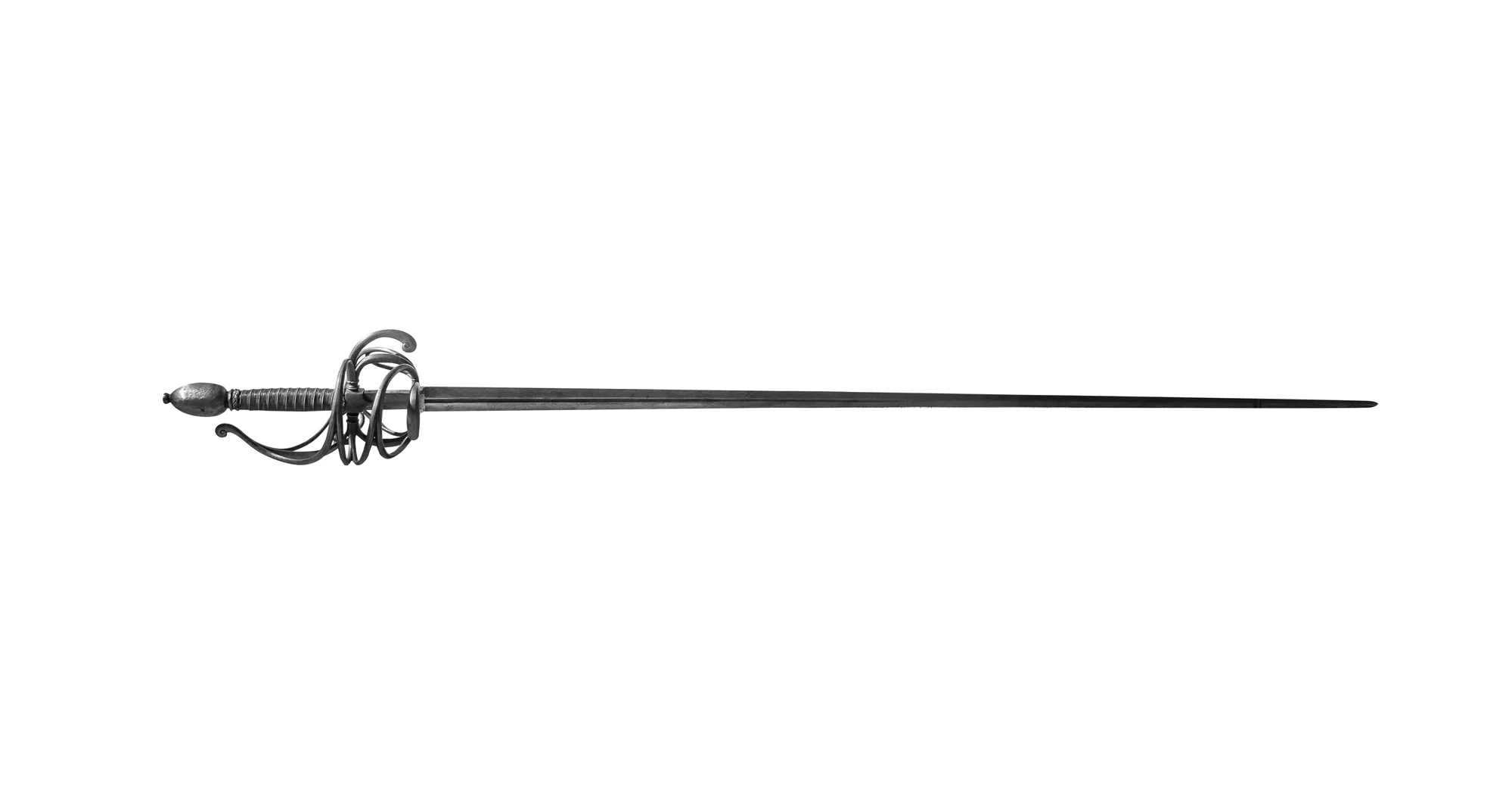
It’s highly maneuverable and can inflict high damage with the tip. It requires some skill to hold and use, as its strength lies in speed and accuracy. Something to be cautious about is that modern rapiers tend to be more flexible, suited for fencing rather than real functional rapiers designed for deadly cutting or thrusting. They are harder to draw and even harder to use effectively if you don’t have experience.
11. Katana
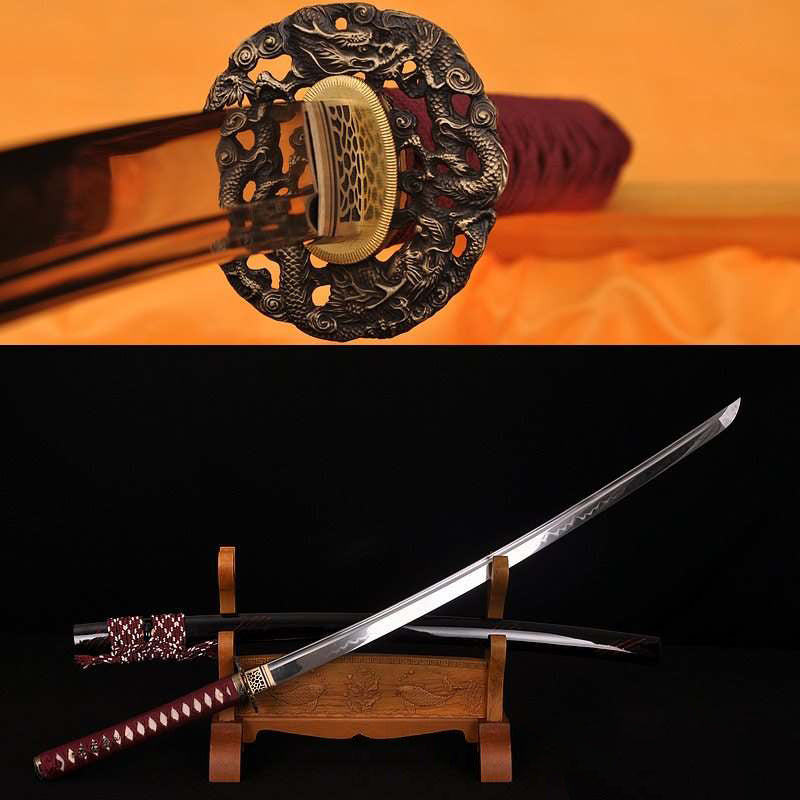
Advantages
- Highly effective for cutting
- Good thrusting
- You can use for both display and defense if needed
- Multi purposes
- Offers a comfortable, well-balanced grip
Disadvantages
- Two handed
- The blade is so sharp that can cause serious injuries and this is not what you want
- Awkward in confined spaces
- Single edged
Not only katanas but also other samurai swords like the tachi and nodachi are some of the most iconic swords in history and are likely among the most collected. This includes traditional models as well as fantasy-inspired replicas from anime, games, and movies, along with custom katanas.
I’m mentioning this because there’s a large community of fans who buy functional replicas of katanas from their favorite shows. If you already have one, that’s perfect.
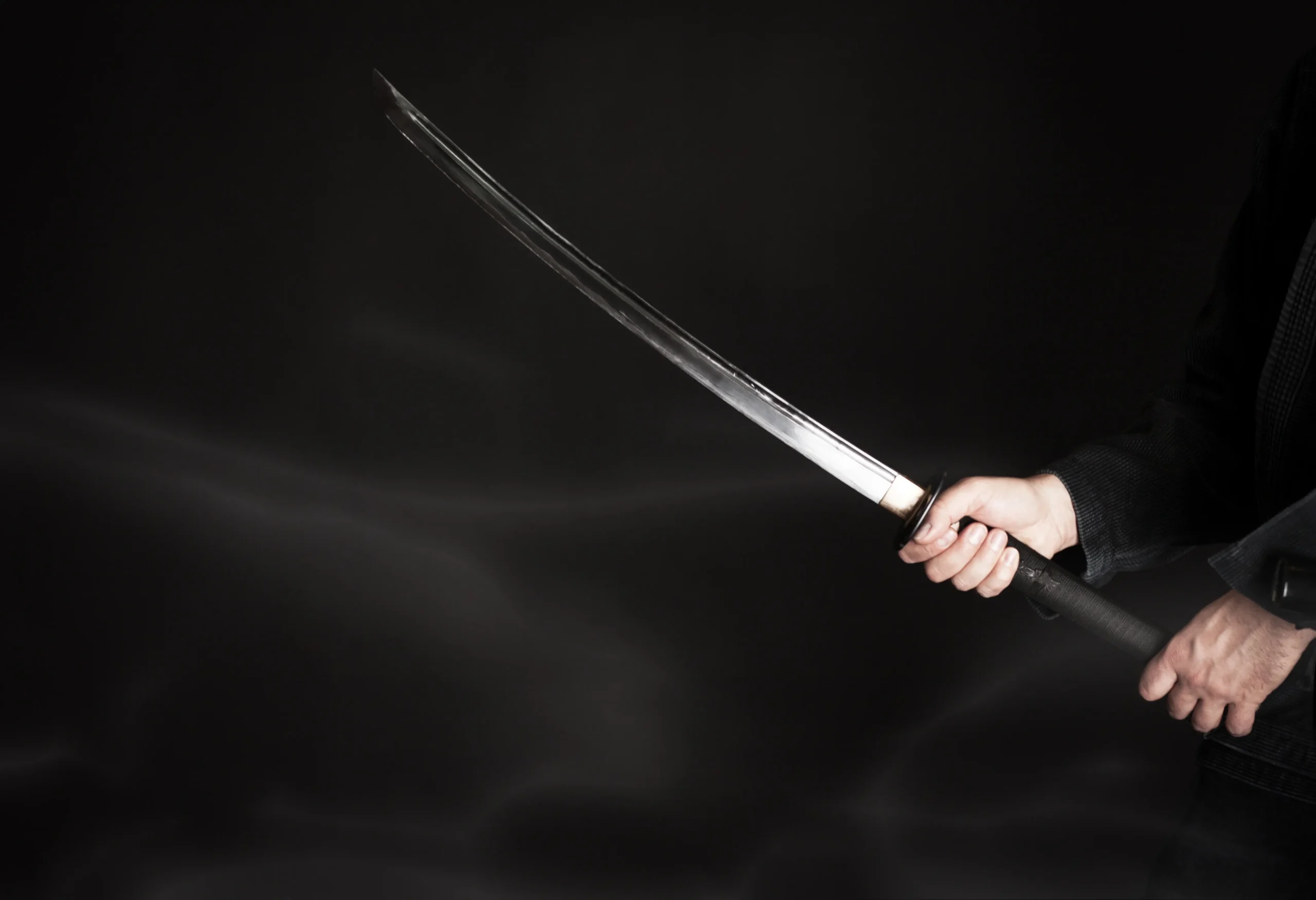
When it comes to our goal, they are good, but there are a few things to consider. The best swords for self-defense are always one-handed swords. Since a katana is two-handed, it’s already a downside; however, this doesn’t mean that it cannot be effective. The first thing you should learn before using a katana for self-defense is how to hold it properly.
You should feel confident when holding and swinging it, maintaining full control at all times. Failing to control it can lead to severe injuries to your opponent—or even to yourself. Overall, katanas offer good reach, they are fast to draw, and can make a very good home self defense tool.
10. Chinese Dao
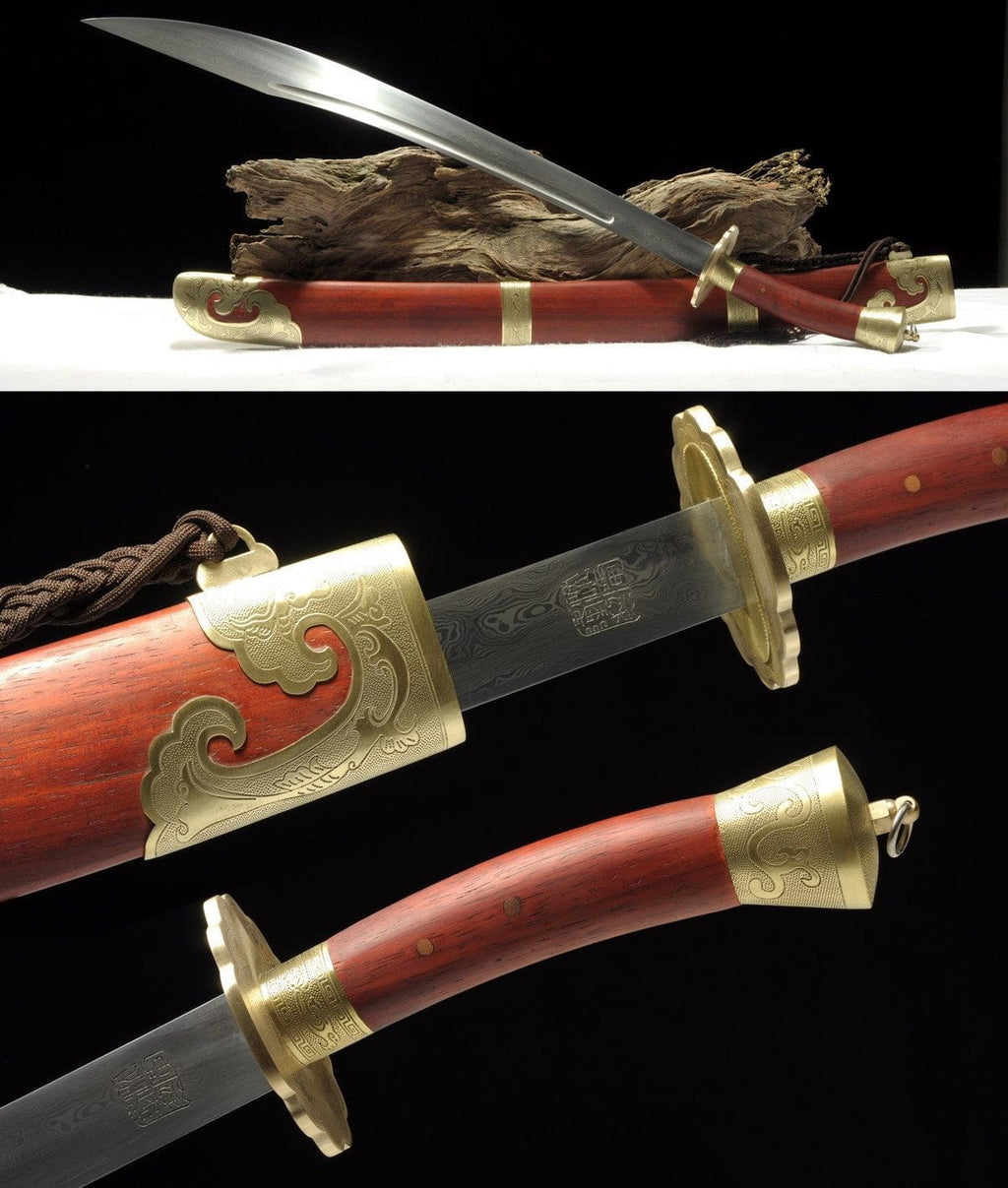
Advantages
- Adapts to various techniques and angles
- Sharp tip for quick piercing
- Fast to draw
- Both elaborate and functional
Disadvantages
- Can be challenging with sweaty hands
- Single edged
First of all, Chinese daos are highly sought after, not only for their rich history but also for their intricate, decorative designs. Beyond being functional swords, they are often beautifully adorned, making them ideal for display. While daos come in various lengths, I always recommend the shorter types (around 65 cm) because they are more practical.
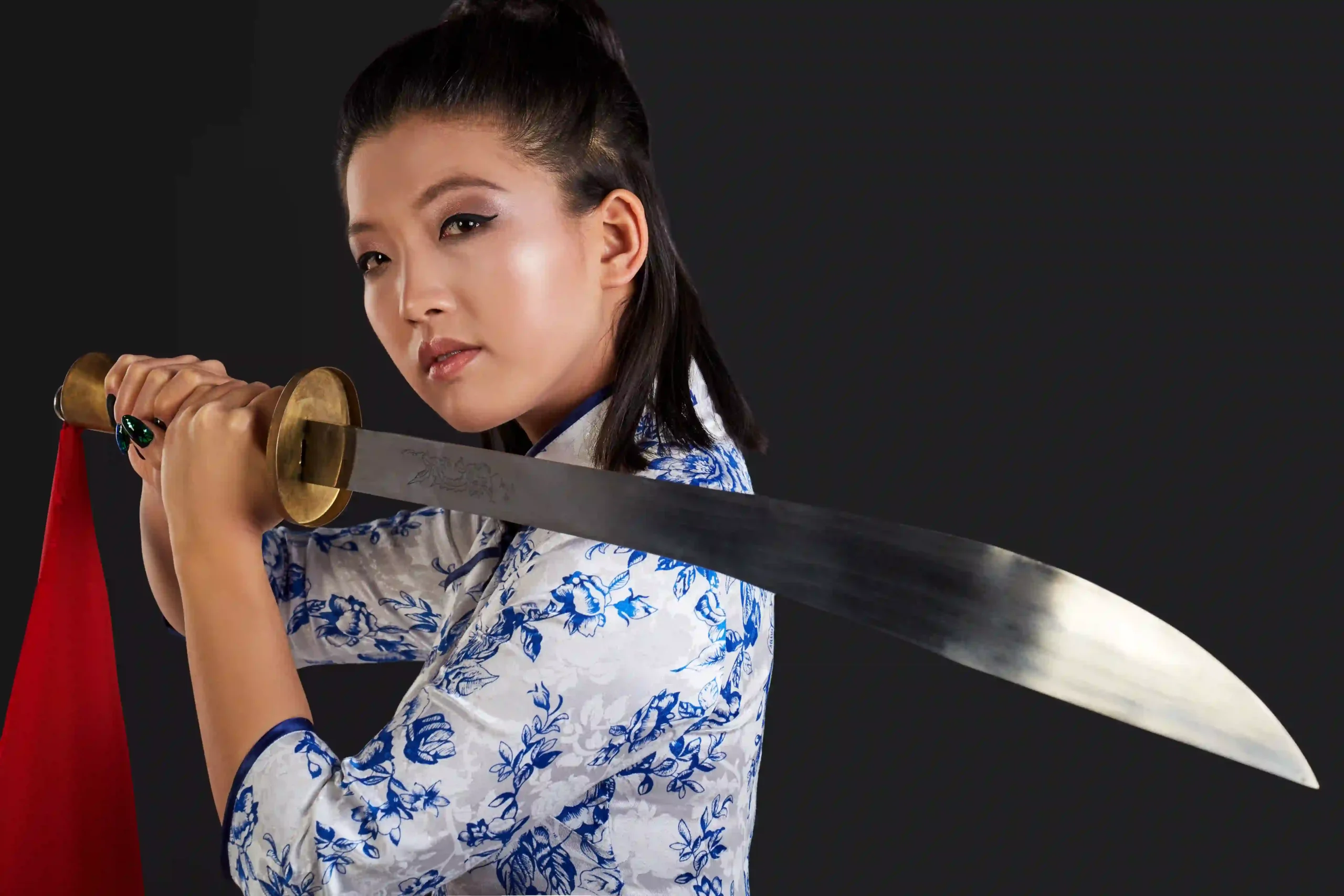
Historically, they were employed in many forms of combat, primarily using powerful slashing attacks and deadly thrusts. The dao is lightweight and can be used with one hand if you are confident enough, or with two for delivering more powerful blows. They are comfortable to handle, quick to draw, and easy to control. If you are a fan of Chinese broadswords, they will absolutely make a great defensive sword.
9. Jian
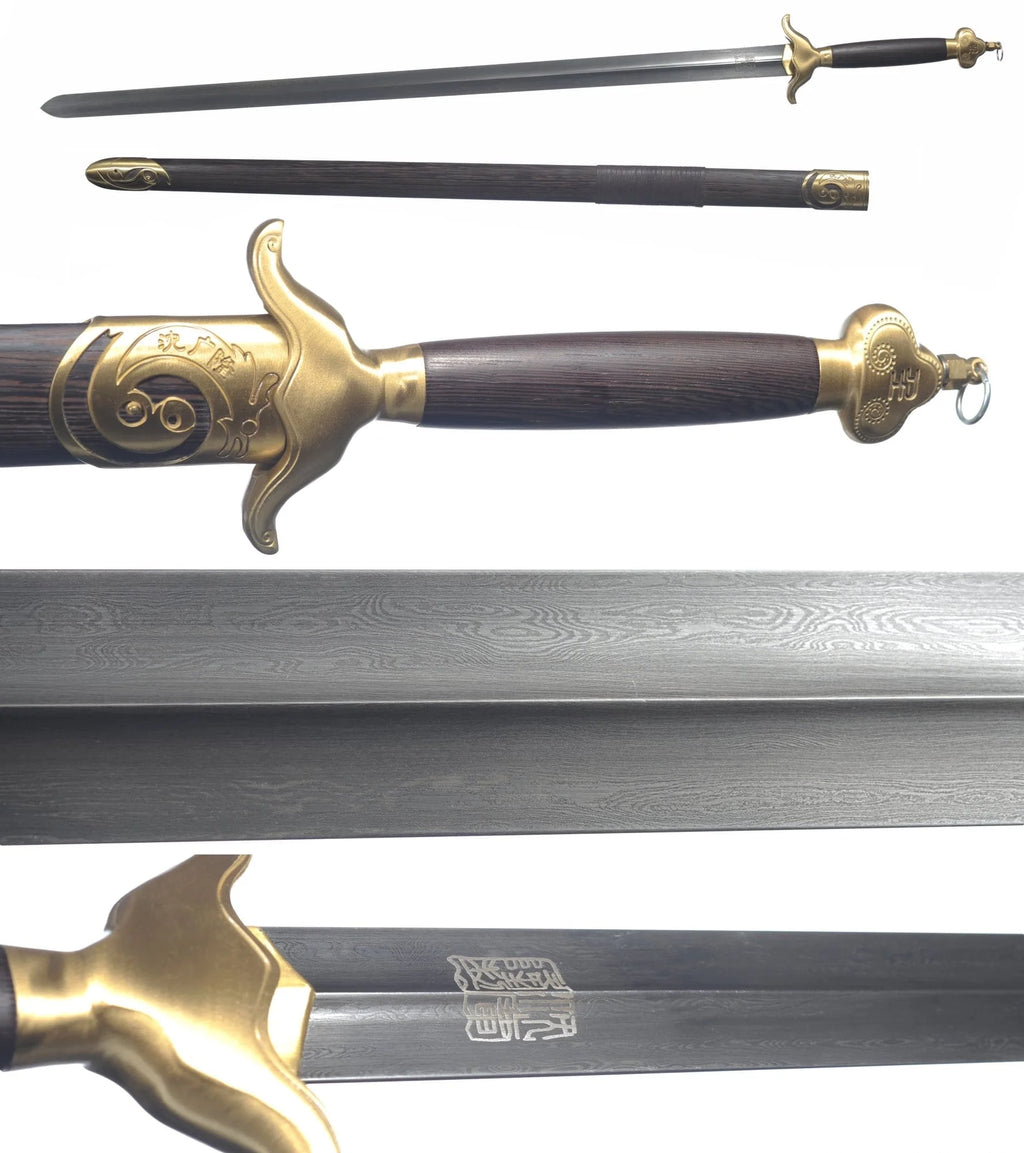
Advantages
- Double edged
- Delivers effective slices
- Lightweight for fast movements
- Adapts to various techniques and angles
- Nice reach
Disadvantages
- Primarily suited for slashing, not thrusting
- Awkward in confined spaces
- Grip can be slippery
The jian is a straight, double-edged sword traditionally used in Chinese martial arts, featuring a sharp blade effective for both thrusting and cutting. Its handle is longer than that of a typical one-handed sword, making it primarily a one-handed weapon but versatile enough for two-handed use depending on handle length. Jian hilts vary. Some may have simple hilts with a handle designed to prevent hand slippage, while others may feature larger guards and more functional pommels.
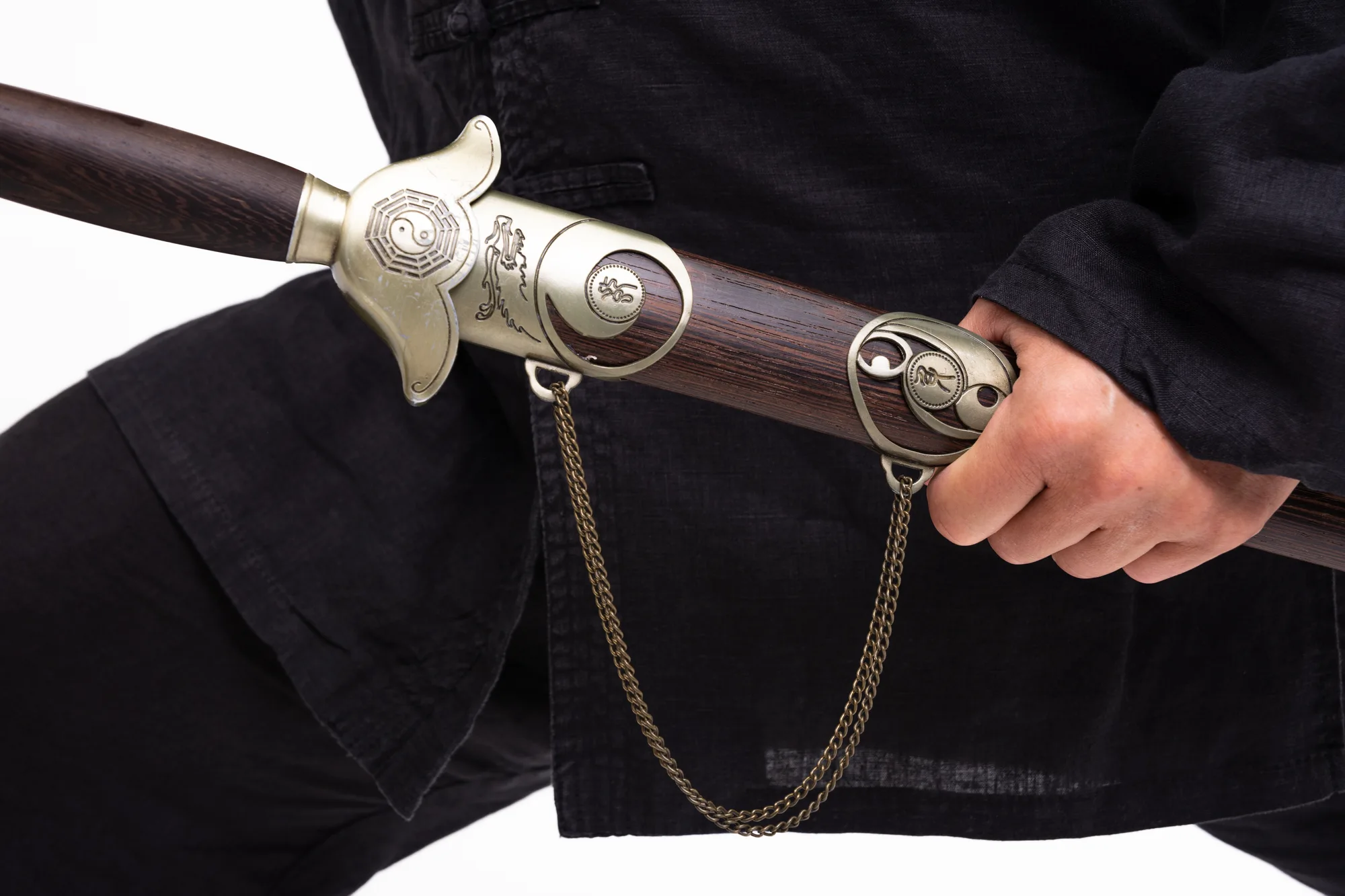
These pommels extend from the back of the grip and can be used for hooking in close-range encounters or for striking, for example when you’ve grabbed an opponent’s wrist. Most jian types don’t have sharply pointed tips. They are rounded, but not blunt. The damage they can do with the point is lower. Its slim and lightweight design makes it suitable for quick, precise attacks and easy handling.
8. Viking Sword
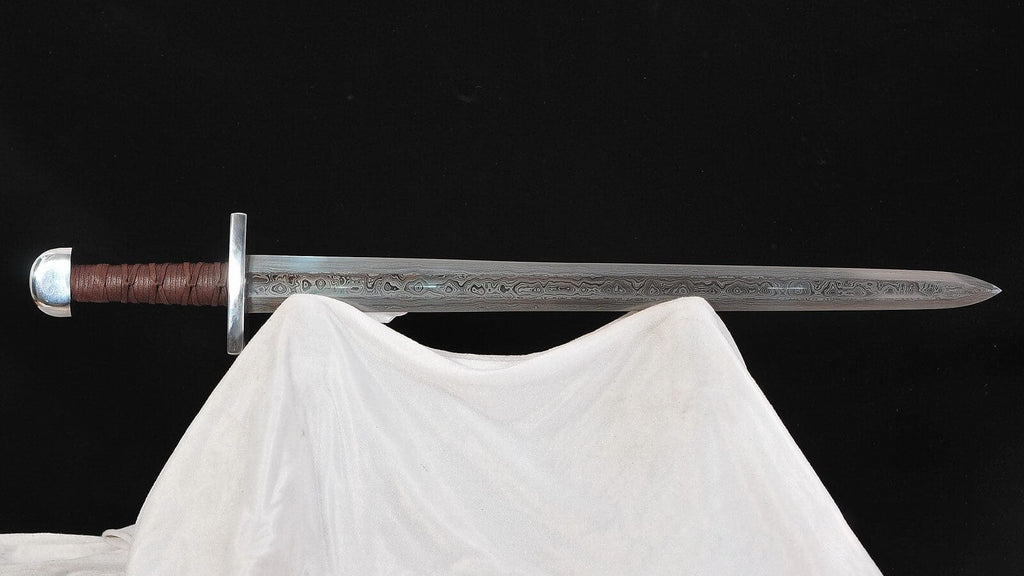
Advantages
- Secure grip
- Nice reach
- Effective for cuts and thrusts techniques
- Adapts to various techniques and angles
- Double edged
Disadvantages
- Requires more force to use effectively
The Viking sword features a broad, double-edged blade designed for both slashing and thrusting, with a length that balances reach and control. It was carried by Viking warriors and used primarily in close combat to delivered powerful strikes.
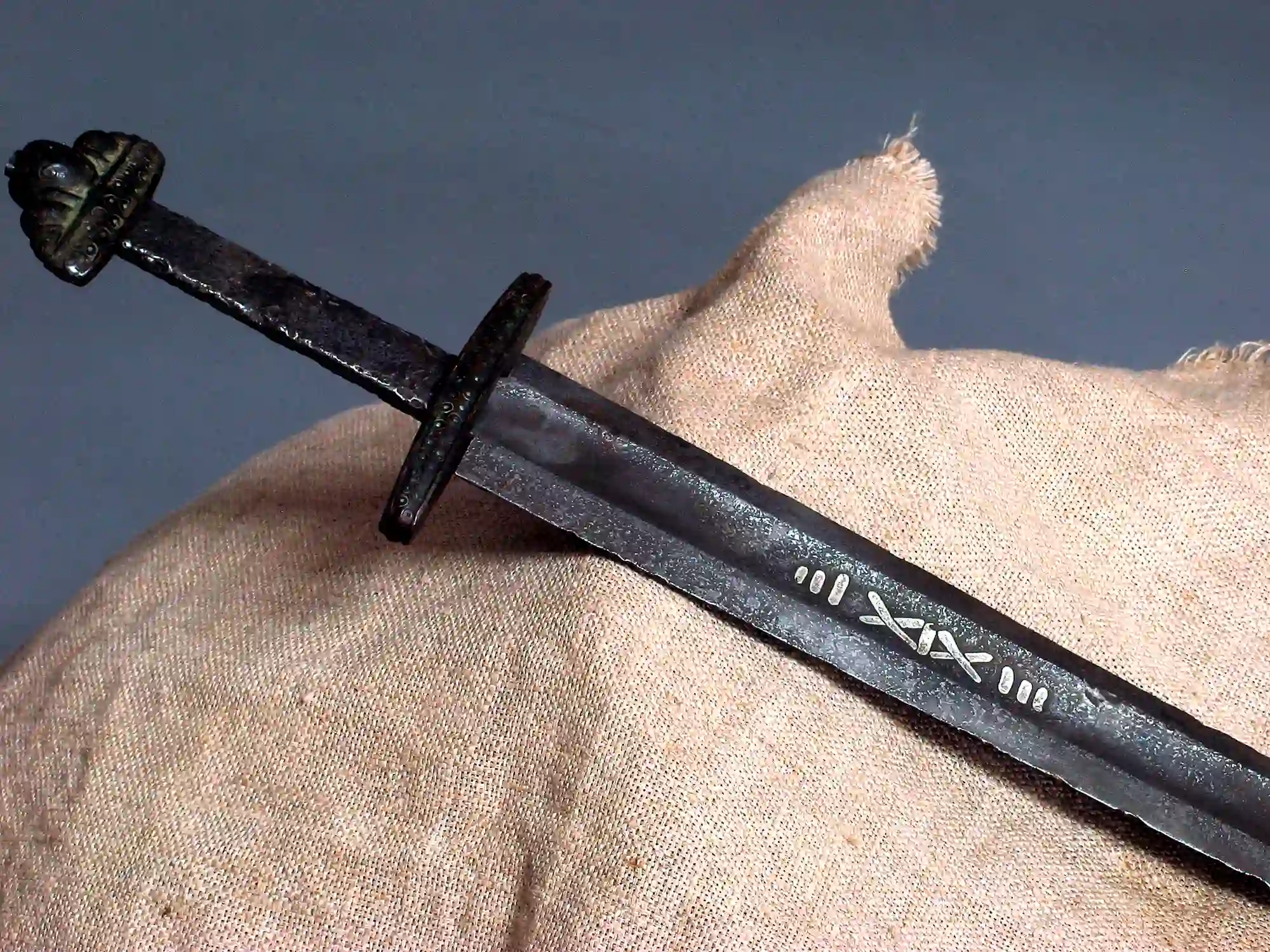
The sword’s strong and wide blade made it excellent for cutting through armor or shields. Viking swords are heavier compared to most one-handed swords. Its blade length can vary, so the weight does as well, but in general, they are heavier. I would say that it doesn’t requires much skill to use effectively but more strength.
7. Smallsword
Advantages
- Easy to maneuver
- Perfect reach
- Sharp tip for quick piercing
- You can use the no-edged blade to hit without causing serious damage
Disadvantages
- Effective only for thrust
The smallsword is probably the most deadly dueling sword in history. Its effectiveness was particularly notable in civilian duels, where opponents wore little or no armor. Its simplicity and ease of use required less brute strength and favored agility and precision—traits ideal for personal defense and quick encounters.
You will see it not only in history but also in different movies. One example is the sword Needle from Game of Thrones held by Arya Stark. That gives a clear idea of how to use it for protection and how deadly it can be.

Smallswords are primarily thrust weapons. They may have full-length sharp edges, or the edge may not run the entire length.
What I find better about it compared to the Roman gladius or Viking sword is that it can cause damage with the sharp part, but the thin blade makes it less deadly than those. Using lighter weapons means you have more control over the situation, and in such cases, the damage may be less serious or more controlled.
6. Ninjato
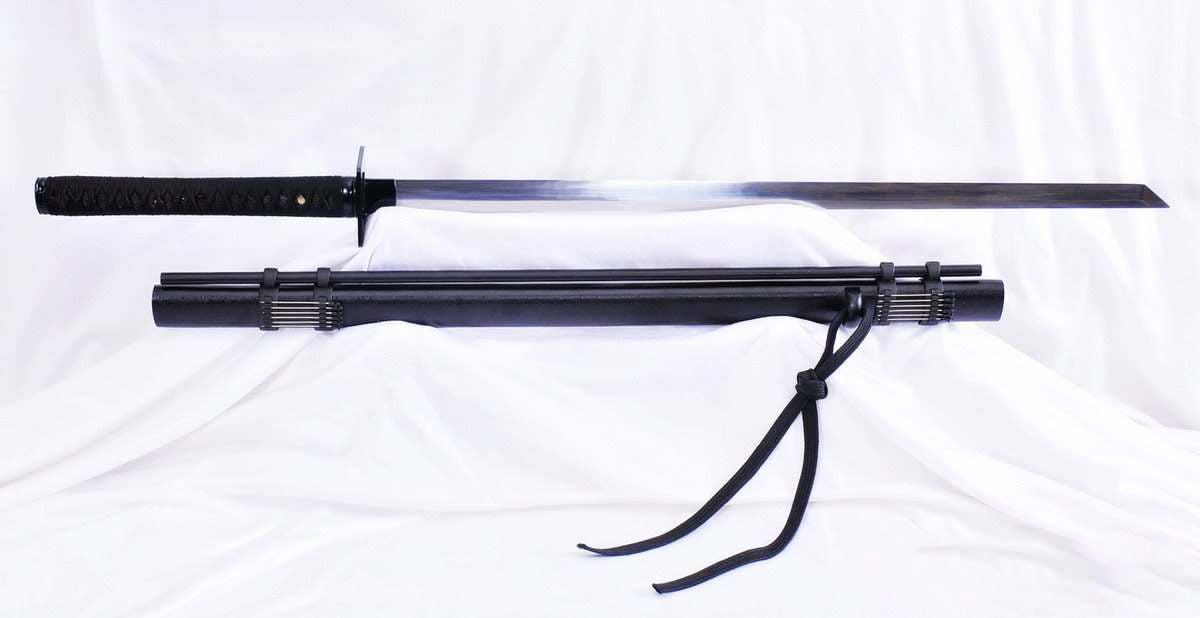
Advantages
- Ideal in tighter spaces
- Maximal control
- Comfortable grip
- Ideal for indoors
- Good for outdoors
- Quicker to draw
- Effective for cut and thrusts
Disadvantages
- Lacks longer reach of other swords
- Single edged
The ninjato is a straight, single-edged sword often associated with ninjas. It is typically shorter than a katana, dao, or jian, making it easier to carry, conceal, and draw quickly. The straight blade allows for fast thrusts and simple slashes, making it effective for quick, surprise attacks or self-defense in tight spaces.
It is practical indoors and easy to maneuver, however, it lacks the reach and cutting power of longer swords. Crafted similarly to samurai katanas, it is comfortable, easy to handle, and highly practical. The ninjato is ideal for close-range encounters and situations where speed is essential.
5. Wakizashi
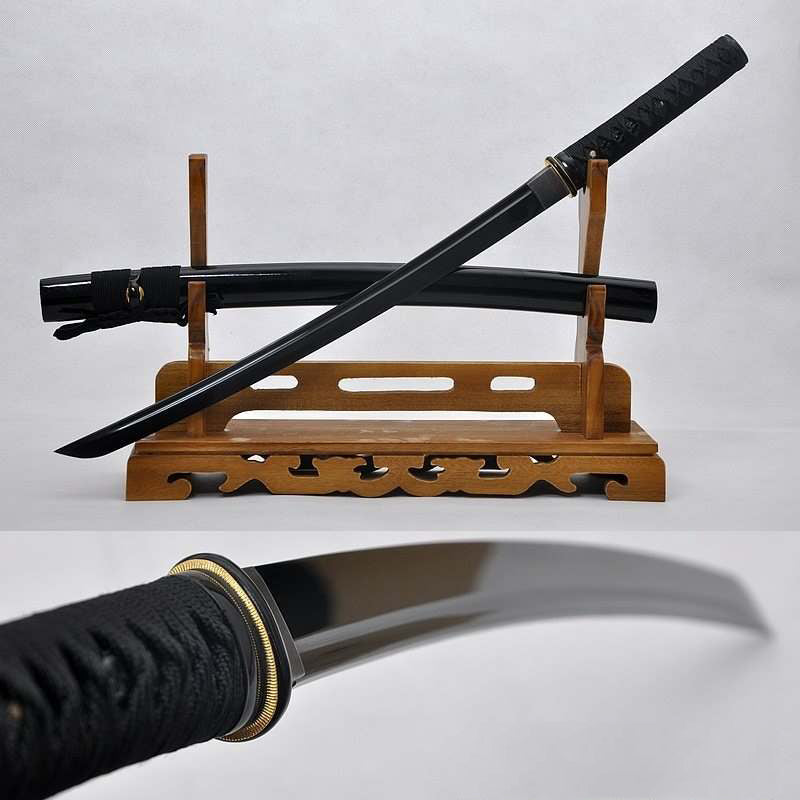
Advantages
- Elaborate and functional
- Ideal in tighter spaces
- Maximal control
- Comfortable grip
- Suitable for outdoor use
- Quicker to draw
- Good reach
Disadvantages
- Single edged
The wakizashi is a highly practical tool and, in ancient Japan, would have been an ideal choice for self-defense. A samurai might use the wakizashi to parry attacks or deliver quick, close-range thrusts and slashes. To deflect or disable an opponent. It was also carried as a secondary weapon. It provided immediate backup if the katana was lost or inaccessible.
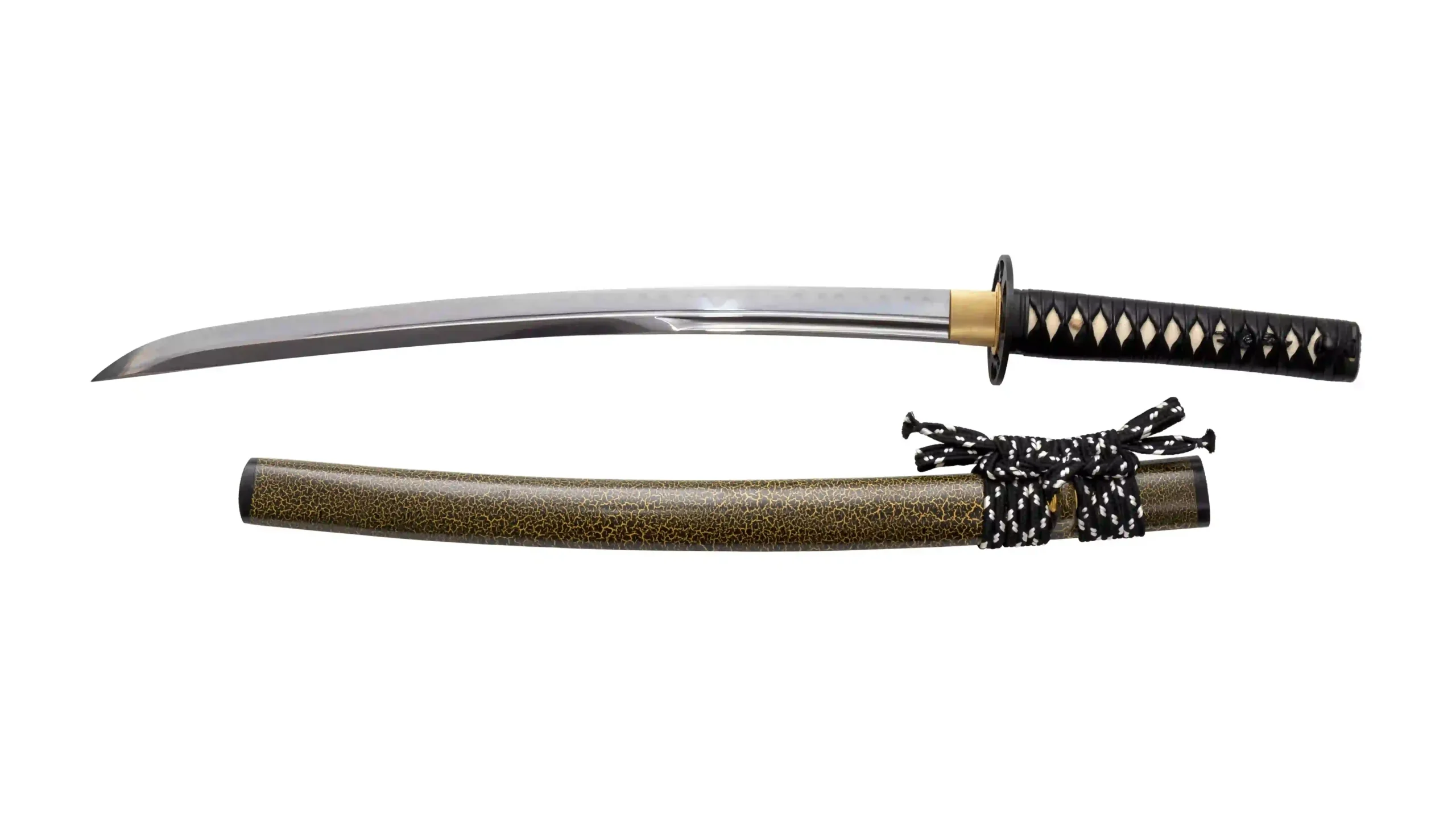
The wakizashi and the ninjato share a similar blade length, meaning they function similarly. However, they differ more in appearance. The first distinction is the blade itself. The wakizashi is slightly curved. The second difference is cultural—being associated with the samurai gives the wakizashi historical significance and value.
In modern replicas, their designs are nearly identical aside from the classic blade shape (curved or straight). Parts like the tsuba (guard), tsuka (handle), and blade feature similar details and are crafted with comparable materials. Though not practical for everyday carry, it’s easy to use, quick to draw, and would make an excellent protection sword.
4. Cutlass
Advantages
- More effective for self-defense than weapons like survival knives
- Powerful cuts
- Easy to maneuver
- Potential to deter threats
- Sturdy blade
- Ideal in tighter spaces
- Suitable for outdoor use
Disadvantages
- Single edge blade
You’ve definitely seen the cutlass in pirate movies. The cutlass is a short, curved sword with a broad blade, originally used by sailors for close combat on ships. Its curved edge makes it effective for quick slashing, while its short length allows it to maneuver with ease and full control.
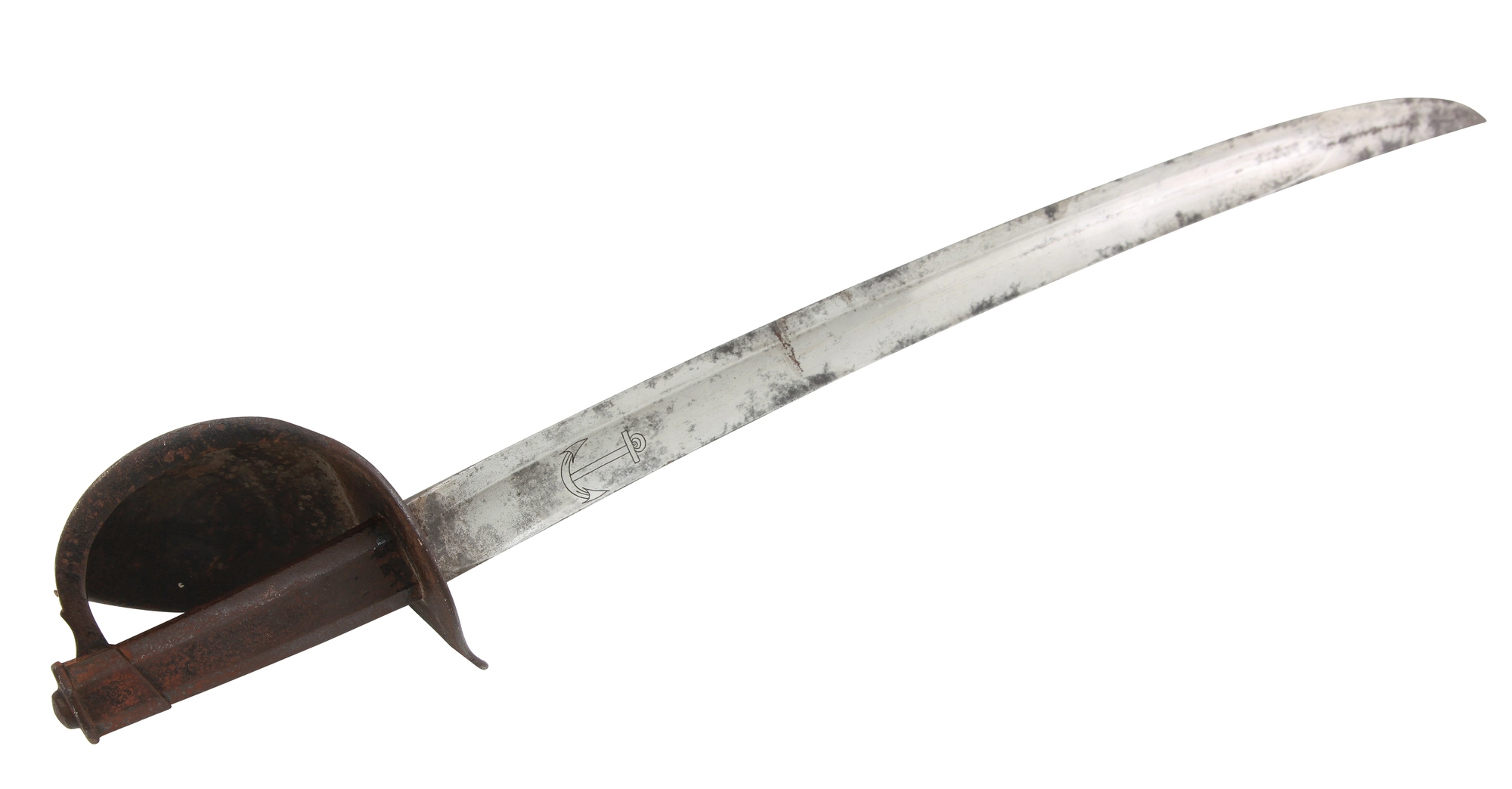
So far, the cutlass is the best self-defense sword you can use in modern times. It offers almost everything you need in a defense blade: ease of use, hand protection, cutting and thrusting capabilities, and reach.
3. Roman Gladius
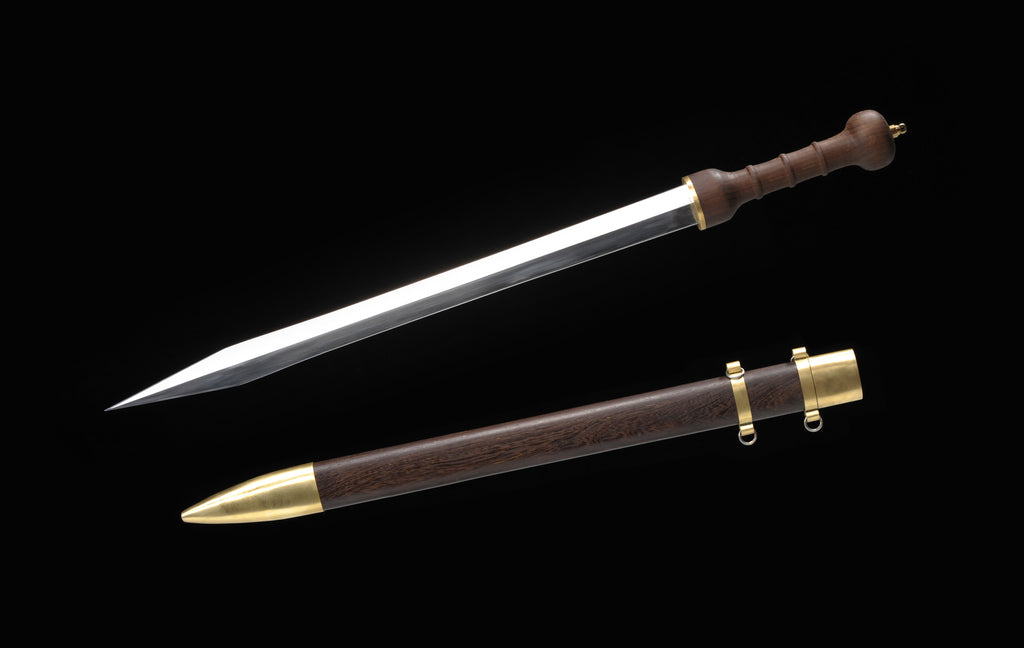
Advantages
- Cuts effectively from both sides
- Sharp tip allows for piercing
- Well-suited for close combat
- Quick recovery
- Practical even if you don’t have experience
- Quicker to draw
- It is lightweight
Disadvantages
- Limited reach compared to some swords
Shorter, lighter, and more practical than most one-handed swords, the Roman gladius was primarily used by Roman legionnaires for both slashing and thrusting in combat. It served as a practical tool they carried regularly, not just for battle, but also for self-defense and everyday tasks. It features a blade length of around 50–60 cm and is broad with a very sharp tip.
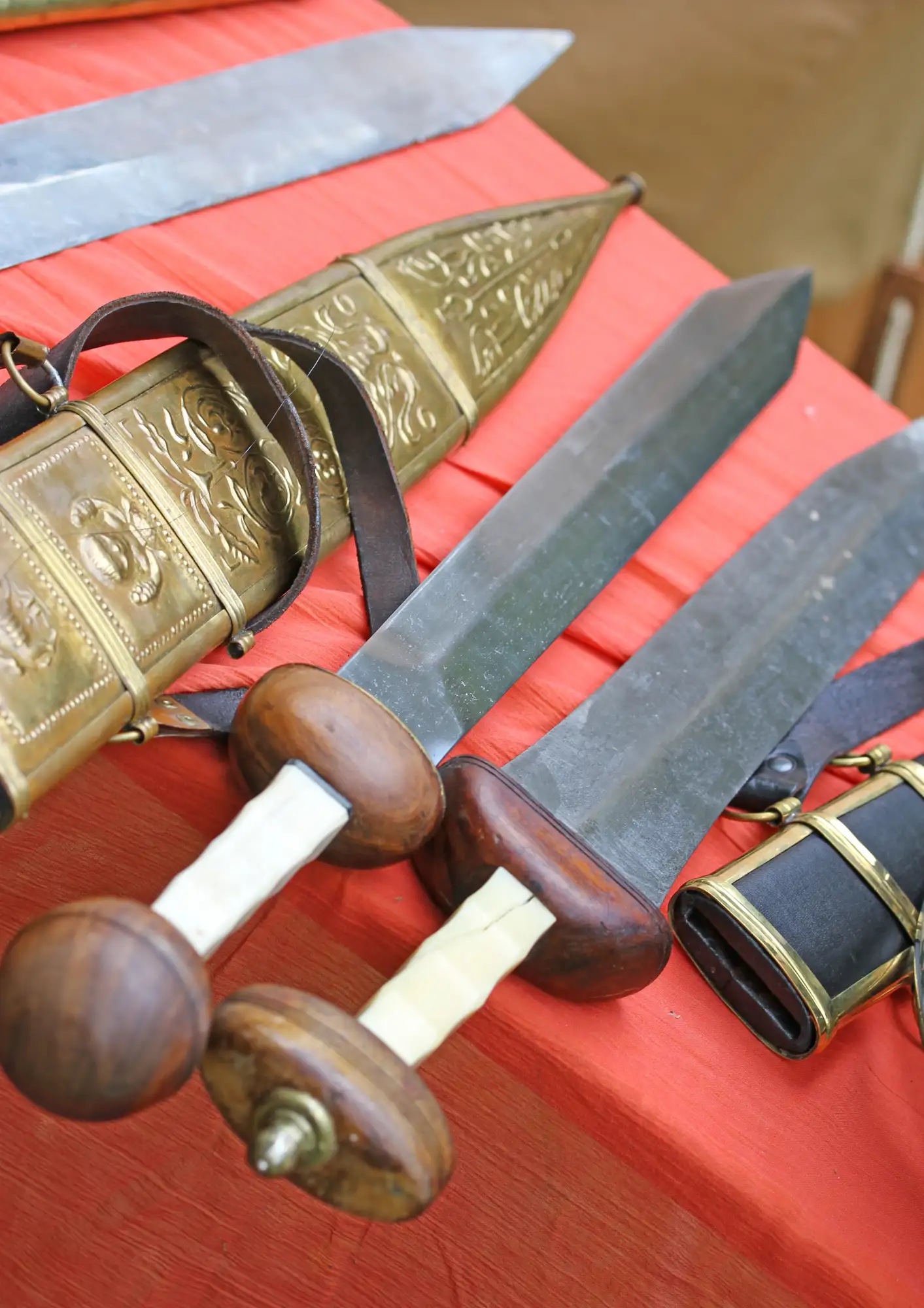
Its compact design makes it very easy to wield. The guard is minimal and almost flat, while the pommel is bulbous and rounded. Both help keeping the hand secure and comfortable in both heavy slashing and thrusting. Since it features a double-edged blade, you have more options in ways to attack.
The only thing it lacks is the longer reach of other swords. Overall, as a self protective weapon, it is the perfect tool.
2. Cane Sword
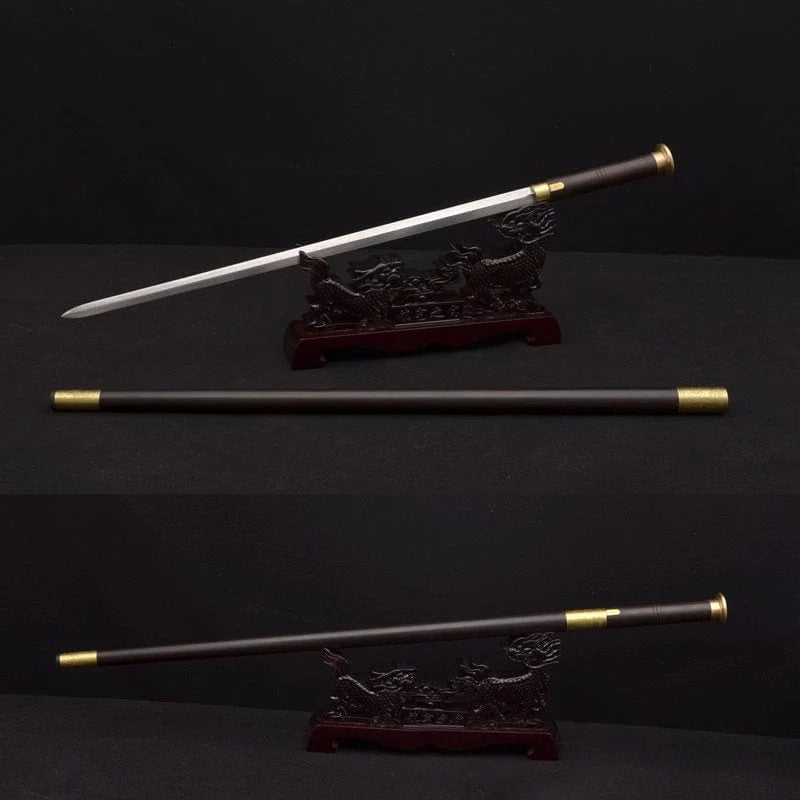
Advantages
- Ready for immediate defensive use
- Can be worn or concealed easily
- Functions as both a walking aid and a weapon
- Lightweight
- Keeps threats at a manageable distance
- Accurate targeting
Disadvantages
- Designed only for close combat
- The quality of modern sword canes may not be the best
- Grip can be slippery because it lack a guard
A sword cane has long been a discreet self-defense tool, offering both style and protection to those who carried it. Historically used by travelers and nobles who needed a subtle way to defend themselves, it combines everyday practicality with hidden functionality. In my opinion, the sword cane is one of the best self-defense swords for modern times, and this for several reasons. First, its discreet appearance allows it to be carried without attracting attention.
It offers a good reach to keep you at a safe distance from threats and it is easy to handle and maneuver with. A sword cane operates with a simple mechanism, a quick press of a button or a firm pull releases the hidden blade, ready in an instant. Although it can cause damage with its sharp edge, compared to swords like the Roman gladius—which can be deadly if you don’t control the force you apply—a sword stick is more likely to cause less severe damage.
1. Tactical Swords
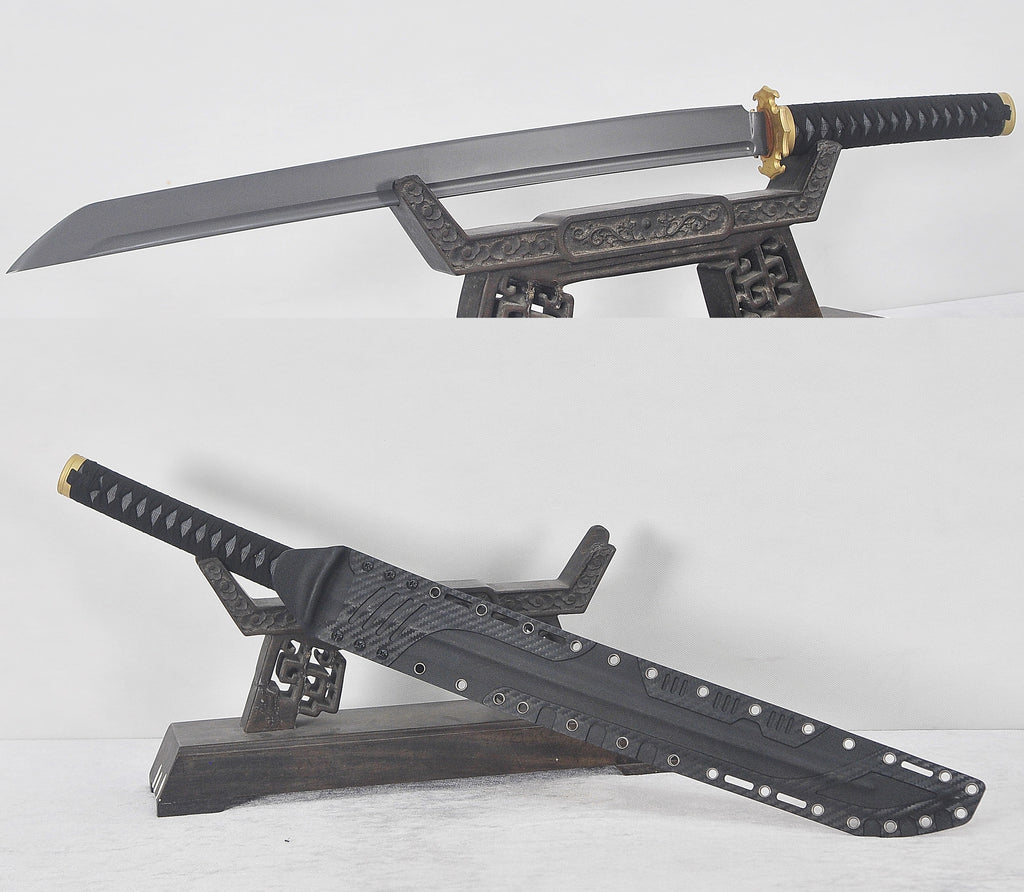
Advantages
- Provides a more secure grip
- The reach is that what you need in modern times
- Effective for both outdoors and indoors environments
- Easy to use and maneuver
Disadvantages
- It is difficult to find high-quality tactical swords
When it comes to the best swords for self-defense, home defense, or survival in modern times, you need swords designed to fit contemporary usage and applications. A large sword is difficult to use for defense effectively. However, a sword crafted with modern materials that isn’t very long but still offers good reach and it is easy to use definitely has the characteristics of an ideal self-defense tool.
Tactical swords, also called modern swords, are made with modern materials and are more practical. The best tactical swords typically prioritize durability, sharpness, balance, versatility, and low maintenance, often achieved through the use of modern steel alloys and construction methods. Many are designed for a wide range of practical applications, from outdoor utility tasks and survival scenarios to combat suitability.
How to Choose the Right Sword for Self Defense
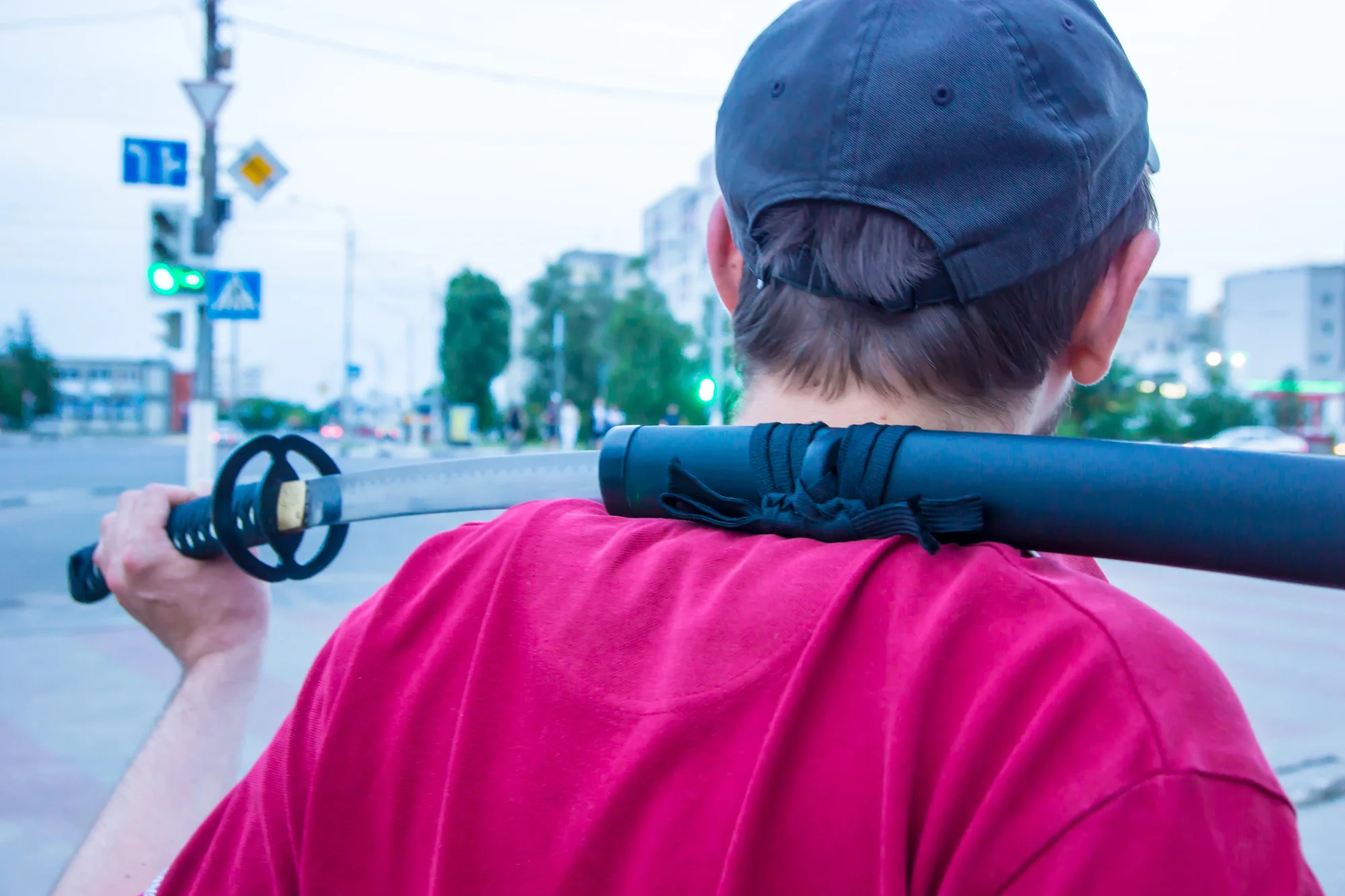
If you are thinking of getting a sword only for protection, most one-handed swords would work well. They are easier to control and faster to draw. Since blade lengths differ a lot between similar types, my suggestion is to choose those around 60 to 70 cm max. Double edged blades are better as they offer more options when attacking.
Last Words
In modern times, while self defense weapons have evolved, swords have remained a reliable option for personal protection. Many types are suitable, though some are more practical and efficient. Not only do they make impressive display pieces, but they also provide a dependable choice for safeguarding what matters most.
It’s crucial to understand local laws regarding the use of swords in self-defense, as using them to inflict harm, even in self-defense, can have legal consequences.
FAQ
Is it legal to use a sword for self defense?
The legality of using a sword for self-defense depends on local laws and the specific circumstances.
Can you defend yourself with a sword?
Yes, you can defend yourself with a sword, but use caution—serious injury or death can lead to criminal charges. The goal is to disable, intimidate, or maintain distance.









